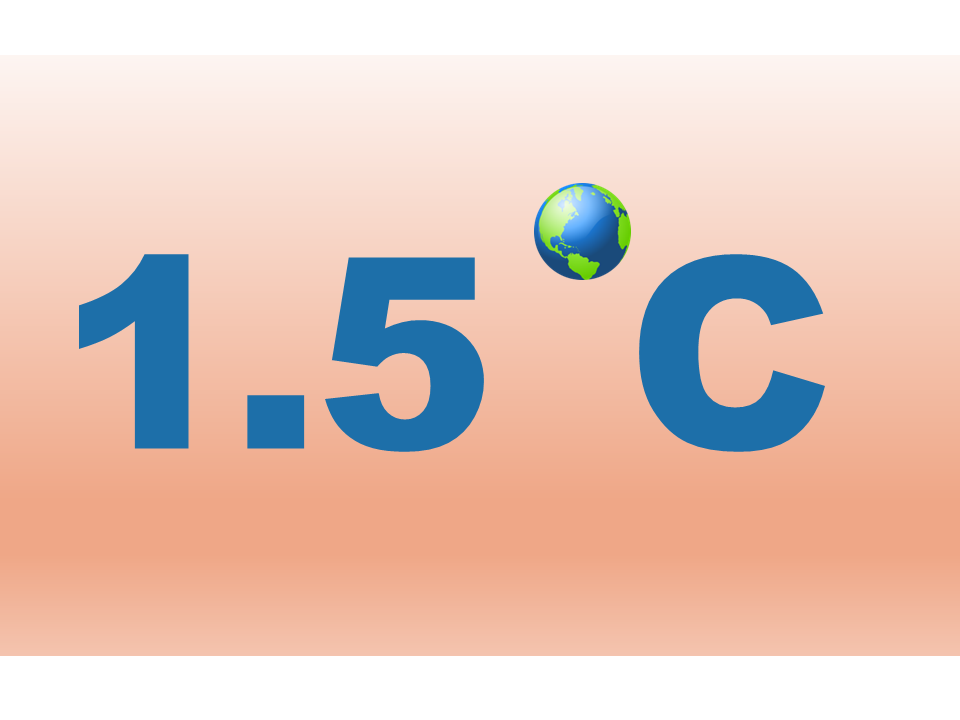Pick Up
1198. Possibility of Entering a Long-term 1.5°C Warming Period

1198. Possibility of Entering a Long-term 1.5°C Warming Period
In 2023, global mean surface temperatures rose by 1.43°C (1.32-1.53°C) above pre-industrial levels. This exceeds the best estimate of anthropogenic warming of 1.31°C (1.1-1.7°C) and indicates that natural variability, including the impact of the El Niño phenomenon, contributed to the 2023 observation. The following year, 2024, was the warmest year on record globally and was announced as the first calendar year to exceed 1.5°C by several international organizations tracking global temperatures. While there is some uncertainty between datasets, the consensus indicates that, on average, the Earth's surface temperature rose by 1.55°C in 2024.
Exceeding 1.5°C for one year does not mean that long-term temperatures have reached the levels mentioned in the Paris Agreement. The temperature goal in the Paris Agreement is measured as a 20-year average above pre-industrial standards. The Intergovernmental Panel on Climate Change (IPCC) assesses global warming over a 20-year span to take into account the effects of natural variability in the observed record when determining anthropogenic global warming, and has detailed the climate risks that may occur at a 1.5°C warming level as its assessment criteria.
Thus, although 2024 was announced as the first year to exceed 1.5°C compared to pre-industrial levels, it is unclear whether the temperature will actually continue as a 20-year average. Based on multiple observational datasets, climate model simulations, and experimental analysis under ideal conditions, an editorial in Nature Climate Change noted that without very ambitious climate mitigation measures, we may not only be in the first year to exceed 1.5°C, but may enter a period in which the 20-year average exceeds 1.5°C.
Whether the first year of a particular warming level actually represents the beginning of a 20-year period of reaching that warming level is determined by the interaction of the warming trend and the variability in the global mean temperature time series. In general, when the long-term warming trend is weak, the first year often occurs due to natural temperature fluctuations before the beginning of 20 years at a particular warming level. Conversely, under a strong warming trend, one warm year tends to fall within a typical 20-year period of that warming level.
If the strong warming trend of 0.026°C/year observed over the past decade continues, it will be almost certain that the first single year to reach 1.5°C will fall within the first 20-year period at 1.5°C. Nevertheless, stringent emission reductions in the near future could significantly reduce the warming rate over the next 20 years. Assuming that the first single year at 1.5°C will occur under currently observed temperature trends and variability, we estimate that the warming trend would need to be reduced to about 0.005°C/year to reduce this probability to about 50%, which can only be achieved through stringent mitigation efforts.
The authors provide an early warning to predict threshold warming levels and call for the urgent implementation of appropriate mitigation and adaptation measures. In particular, stringent short-term mitigation measures could significantly reduce the risk of warming levels exceeding 1.5°C, even immediately after the first single year above 1.5°C. Furthermore, if we exceed 1.5°C, only rapid mitigation measures in the short term can have a high probability of effectively limiting warming to well below 2°C. The authors urged that rather than despairing over the next year that we have exceeded 1.5°C, we should view it as an opportunity to take action.
Reference
Bevacqua, E., Schleussner, CF. & Zscheischler, J. A year above 1.5 °C signals that Earth is most probably within the 20-year period that will reach the Paris Agreement limit. Nat. Clim. Chang. (2025). https://doi.org/10.1038/s41558-025-02246-9
Contributor: IIYAMA Miyuki, Information Program
